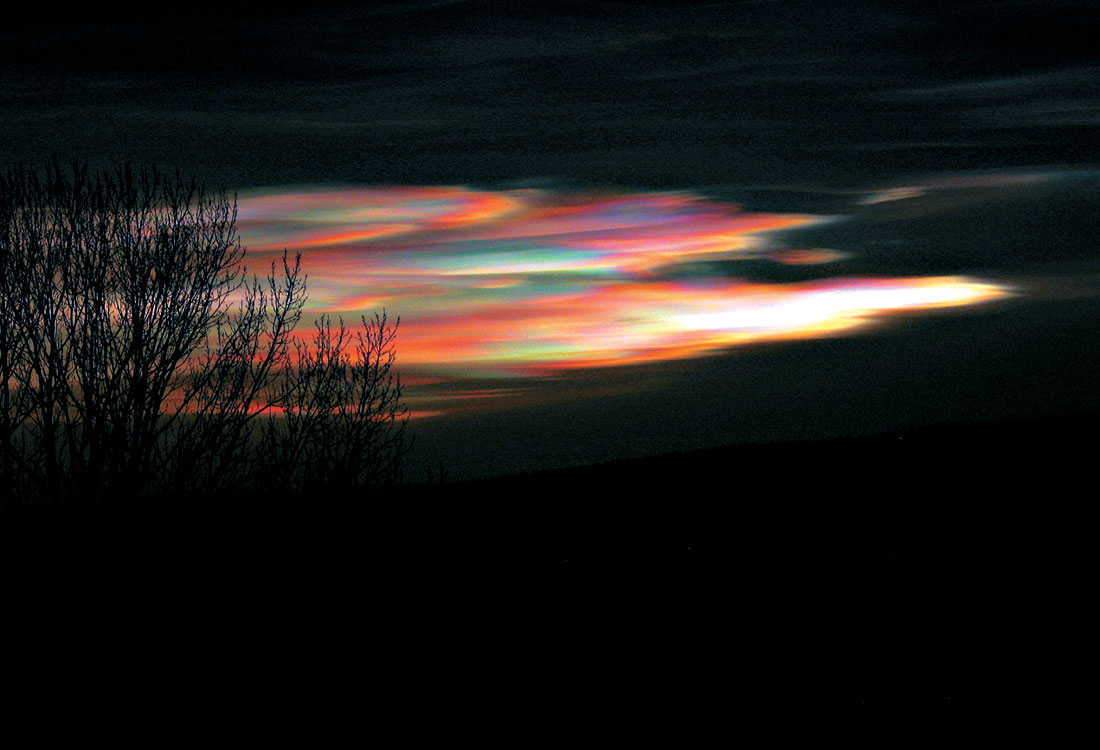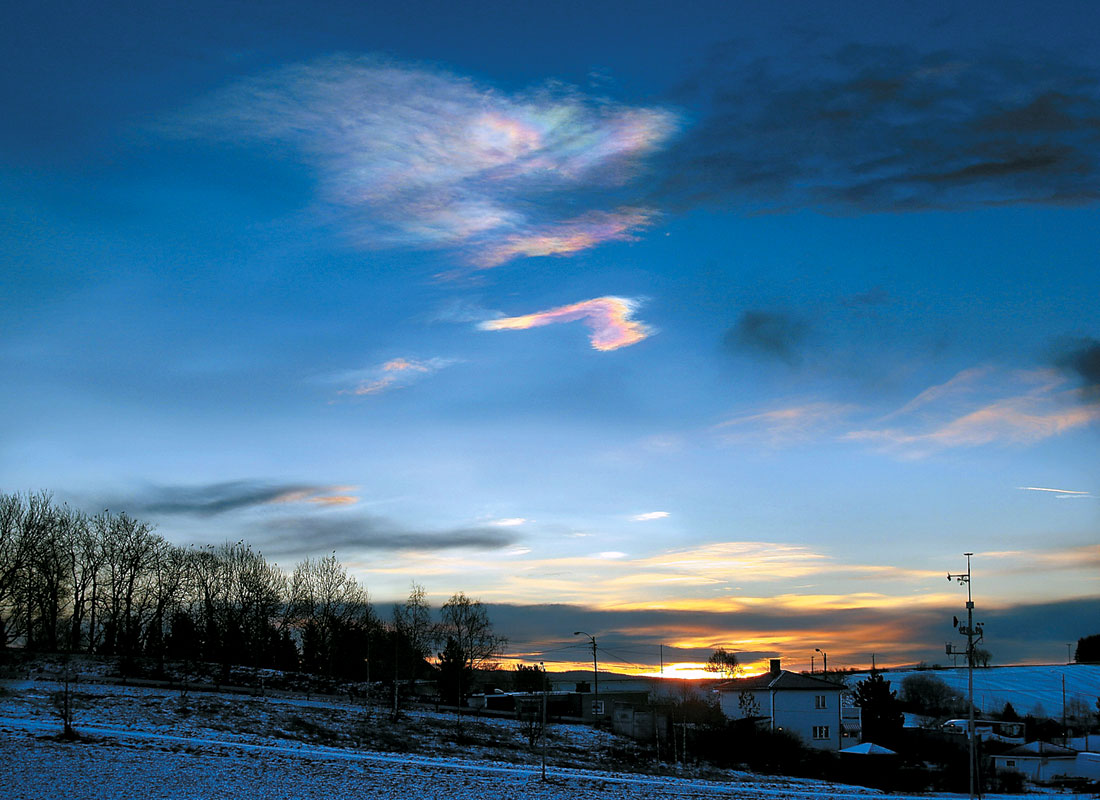25 April 2005. The chemical balance in the stratosphere has changed significantly due to the presence of PSC clouds, altering the breakdown products from man-made CFCs (chlorofluorocarbons) so that rapid chemical ozone destruction can occur in the presence of sunlight. The cold conditions affected the distribution of nitrogen oxides, allowing ozone loss to continue longer than usual.
The first signs of ozone loss were reported in a press release issued by the SCOUT-O3 project and the European Commission on 28 January 2005. As sunlight returned to northern latitudes the rate of ozone depletion increased and rapid destruction of ozone occurred throughout February and March. In the altitude range where the ozone layer usually reaches its maximum concentration, more than half of the ozone was lost. “Overall, about 30% of the ozone layer was destroyed” says Markus Rex, an ozone scientist from the Alfred Wegener Institute in Potsdam, Germany. “This largely prevented the normal seasonal increase of the thickness of the ozone layer during winter and led to a thinner ozone layer in Arctic spring compared to warmer years” continues Rex.
The overall degree of ozone loss this year was of similar magnitude as the record loss that was observed in the Arctic during the winter of 1999/2000. During late March the Arctic air masses drifted over central Europe, which, in combination with unrelated dynamical effects, led to individual days of significantly increased UV-B radiation and sunburn risk in parts of Europe. The affected region reached as far south as northern Italy.
Emissions of ozone depleting substances are now largely banned worldwide by the Montreal protocol. As a first success of this milestone of international cooperation in environmental policies the atmospheric concentrations of CFCs started to decrease. But the atmospheric lifetime of these compounds is extremely long and the concentrations will remain at dangerously high levels for another half century.
Over the next few decades the fate of the Arctic ozone layer will mainly depend on the evolution of atmospheric temperatures at the altitude of the ozone layer. Over the past forty years the conditions there have become significantly colder. “The cooling was particularly pronounced for the cold Arctic winters.
Unfortunately these are the winters that result in large ozone losses. In 2005 the average extent of conditions cold enough for the existence of polar stratospheric clouds was four times larger than ever observed in the sixties or early seventies of the past century” says Georg Hansen, an ozone scientist from the Norwegian Institute for Air Research. This continuous cooling trend is qualitatively consistent with what would be expected as a result of increasing concentrations of greenhouse gases in the atmosphere. However, the coupling processes between climate change and temperatures in the polar ozone layer are complicated by feedback processes that are currently not sufficiently understood to make reliable predictions for the future.

Photo: Geir Braathen, Norwegian Institute for Air Research.
Scientists from the EU SCOUT-O3 Integrated Project have been studying the links between stratospheric ozone and climate change in the Arctic since May 2004. The project is co-ordinated at the University of Cambridge’s Department of Chemistry and has 59 partner institutions with over 200 scientists involved from 19 countries. “Our aim is to improve the predictions of future ozone and other stratospheric changes as well as the associated UV and climate impact” says Neil Harris from the University of Cambridge, one of the coordinators of the project.
“Within SCOUT-O3 we have followed the meteorological conditions in the Arctic closely and a suite of atmospheric observations and model calculations were triggered on a very short notice,” says Florence Goutail, an ozone expert from CNRS.

Photo: Geir Braathen, Norwegian Institute for Air Research.
The Arctic ozonesonde station network started a campaign of coordinated measurements to monitor the chemical ozone destruction. Groundbased instruments, belonging to the Network for the Detection of Stratospheric Change, deployed throughout the Arctic region, have followed the evolution of the ozone layer. ESA carried out additional measurements of the chemical composition of air in the Arctic ozone layer with the ENVISAT research satellite. The high flying research aircraft Geophysica made a deployment deep into Arctic air masses resulting in additional insitu observations of key species. Preliminary results from all these studies have been presented at the European Geophysical Union meeting in Vienna this April.

Acknowledgements
This article was first published in ‘EGGS’, newsletter of the European Geosciences Union (http://static.egu.eu/static/5343/newsletter/eggs/eggs_12.pdf), Issue 12, July 2005, and published here with permission from EGU.










Join the Conversation
Interested in starting, or contributing to a conversation about an article or issue of the RECORDER? Join our CSEG LinkedIn Group.
Share This Article